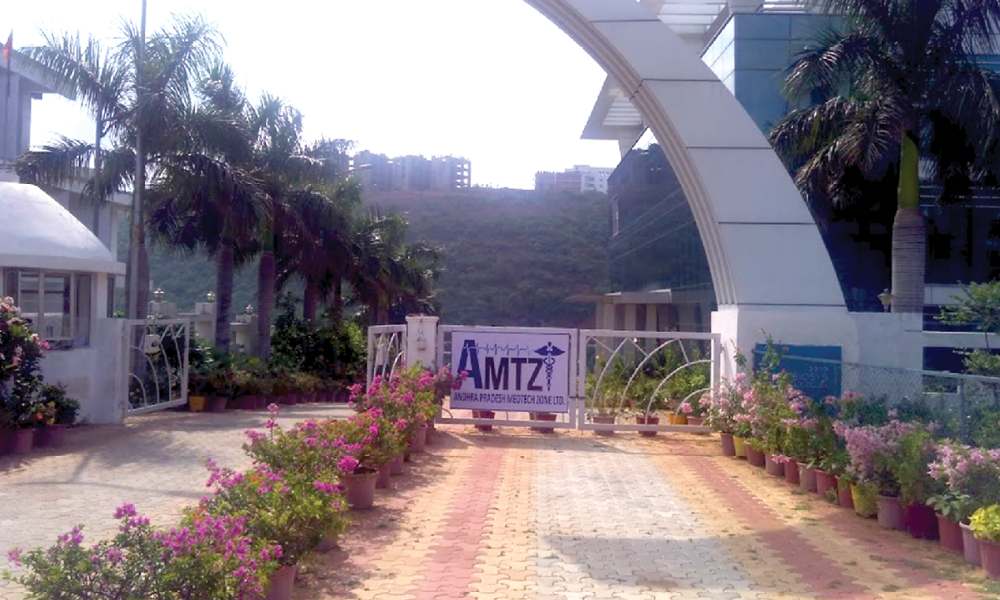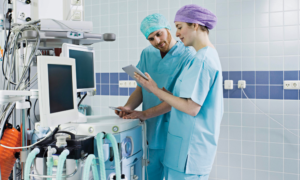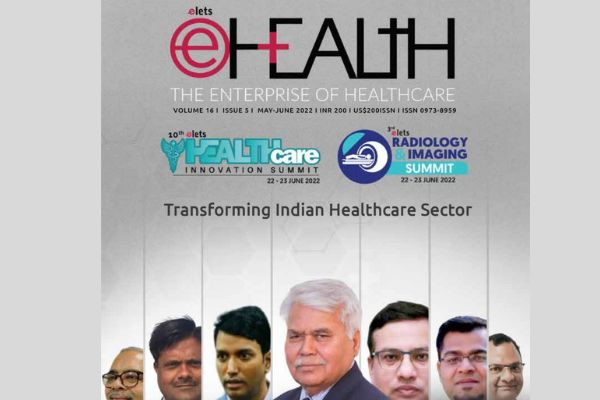Shaping Indias MedTech Growth Narrative
 The recent decision of the government to put in place new rules for the medical devices industry, which was long awaited, is set to boost the governments Make in India campaign by providing beneficial environment for domestic manufacturers. The new rules have improved norms for obtaining license and conducting clinical trials, and reduced manufacturer-regulator interface by promoting digital platform, write Dr Jitendar Sharma, Director and CEO, AMTZ and Srinivasa R Pilli, Senior Manager, AMTZ for Elets News Network (ENN).
The recent decision of the government to put in place new rules for the medical devices industry, which was long awaited, is set to boost the governments Make in India campaign by providing beneficial environment for domestic manufacturers. The new rules have improved norms for obtaining license and conducting clinical trials, and reduced manufacturer-regulator interface by promoting digital platform, write Dr Jitendar Sharma, Director and CEO, AMTZ and Srinivasa R Pilli, Senior Manager, AMTZ for Elets News Network (ENN).
As the up-to-date regulatory practices in India were not fully geared to meet the requirements for medical devices sector in the country, Indias Ministry of Health and Family Welfare released long-awaited new medical device and in vitro diagnostic (IVD) regulations on January 1, 2017 that will take effect in January 2018.

The Medical Device Rules 2017, issued by the Ministrys Central Drugs Standard Control Organisation (CDSCO), primarily separates norms for medical devices manufacturing from the longstanding Drugs and Cosmetics Act, 1940.

The new rules have improved norms for obtaining license and conducting clinical trials, and provides for reduced manufacturer-regulator interface by promoting digital platform. The move will boost the governments Make in India campaign by providing beneficial environment for domestic manufacturers that could lead to greater long term investments. The rules are aimed to standardise and regulate medical devices manufacturing industry on par with international standards. The new rules have been framed in conformity with Global Harmonisation Task Force (GHTF) framework and follow best international practices that are expected to boost Indias local medical device manufacturing industry.
New Classification Scheme

The medical devices could range from simple devices such as thermometers and disposable gloves to radiology machines and implantable devices such as stents and artificial joints.

Medical devices and IVDs have been classified into four categories based on their risk type ” Class A, B, C and D ” where A and B are low risk devices such as x-ray, CT, MRI, etc. C and D categories have higher risk quotient such as stents and other implantable devices. For approvals and licensing in devices falling under category C and D, the Central Government will be directly involved.
The government is outsourcing the task of auditing manufacturers of devices categorised as Class A and Class B, the local equivalent of Europes low to moderate risk Class I and Class IIa groupings. Notified bodies, which could be any institute, organisation or body corporate, will audit producers of such devices to verify their conformance with the quality management system. The notified bodies will be accredited by the National Accreditation Body, which could itself be an outside firm or institute appointed by the government.
The regulatory authority takes account of the probability that harm will occur by modifying the evidence requirements at the conformity assessment stage rather than modifying the classification rules. Probability of harm is influenced by factors such as whether the technology is regarded as mature; the device type is the source of many adverse event reports; the devices manufacturer has a sustained experience of the device and the technologies it embodies; or the device user is a lay man.
The hazard presented by a medical device depends substantially on its intended use and the technology it utilises. Consequently, the classification rules stipulated in this regulation factors in whether the device is life supporting or sustaining; is invasive and if so, to what extent and for how long; incorporates medicinal products, or human/animal tissues/cells; is an active medical device; delivers medicinal products, energy or radiation; could modify blood or other body fluids; is used in combination with another medical device.
A further advantage of a rules-based system of classification is that it is easily adapted to accommodate innovative technologies.
Clinical Trials Norms Relaxed
 Clinical trials are one subject tackled by the new rules. Applying drug regulation to devices forced the four-phase clinical trial process on developers of medical equipment, despite much of the rest of the world having a more streamlined pathway. The new rules have a two-phase clinical trial process, in which safety is assessed in a small number of patients before a larger pivotal efficacy study is initiated. Subjects injured in trials are eligible for compensation.
Clinical trials are one subject tackled by the new rules. Applying drug regulation to devices forced the four-phase clinical trial process on developers of medical equipment, despite much of the rest of the world having a more streamlined pathway. The new rules have a two-phase clinical trial process, in which safety is assessed in a small number of patients before a larger pivotal efficacy study is initiated. Subjects injured in trials are eligible for compensation.
Indian Certi fi cati on for Medical Devices (ICMED) Scheme
As a step forward, Andhra Pradesh MedTech Zone (AMTZ) recently signed an MoU with the Quality Council of India (QCI) to promote Indian Certification for Medical Devices (ICMED) Scheme in India.
[su_table]
| Proposed General Classifi cation System and Regulatory Controls | |||
| Class | Risk Level | Medical Device Examples | IVD Device Examples |
| A | Low – Risk | Bandages / Tongue Depressors/Surgical Retractors | Clinical chemistry analyser/ prepared selective culture media |
| B | Low-Moderate Risk | Hypodermic Needles / Suction Equipment | Vitamin B12, Pregnancy self- testing, Anti-Nuclear antibody, urine test strips |
| C | Moderate- High Risk | Lung Ventilator / Bone fixation plate/Infusion Device | Blood glucose self-testing HLA typing, PSAscreening, Rubella |
| D | High – Risk | Heart Valves / Implantable Defibrillator/ Pacemakers | HIV blood donor screening, HIV blood diagnostic |
[/su_table]
Classification System for Medical Devices& IVDs
Note: The examples of medical devices provided in Figure 1(1 and 2) are for illustration only and a manufacturer of such a device should not rely on it appearing as an example but should instead make an independent decision on classification, taking account of its design and intended use. Central licensing authority CDSCO may, from time to time, make additions or deletions in such list of medical devices or modify the class of any medical device.
AMTZ and QCI would be working closely in this direction by joint selection of agencies for promotion of quality in medical devices and even facilitating manufacturing of recognised technologies at AMTZ.
Developed in collaboration with AiMeD, QCI and the NABCB “ ICMED is a quality certification scheme for medical devices in the country with an aim to enhance patient safety, and increase consumer protection along with providing much needed product credentials to manufacturers to introduce confidence among buyers. It also aims to bring down the substantial time and cost-run to obtain globally accepted quality certification for Indian companies and eliminate the malpractices of sub-standard or fraudulent certification or quality audits.
The Scheme has been launched with two levels of certification:
â™ ICMED 9000 certification which is ISO 9001 plus additional requirements
â™ ICMED 13485 which is ISO 13485 plus additional requirements
The MoU was signed by Dr Jitendar Sharma, Chief utive Officer, AMTZ and Dr RP Singh, Secretary General, QCI in the presence of Dr Kamineni Srinivas, Health and Medical Education Minister, Government of Andhra Pradesh; Dr Poonam Malakondaiah, Principal Secretary-Health Medical & Family Welfare, Government of Andhra Pradesh; Rajiv Nath, Forum Coordinator, Association of Indian Medical Device Industry (AiMeD); Anil Jauhri, Chief utive Officer, National Accreditation Board for Certification Bodies (NABCB); and Mrutunjay Jena, Joint Director, NABCB and other distinguished guests.
AMTZ to Host New Help Desk of Medical Devices Rules, 2017
 Last year, the Government of Andhra Pradesh established the countrys first medical technology manufacturing park, Andhra Pradesh MedTech Zone (AMTZ), in Vishakhapatnam. Andhra Pradesh Chief Minister N. Chandrababu Naidu laid the foundation stone of AMTZ. Making a humble start from Vishakhapatnam, AMTZ is carving its own path to glorious successes month after month. AMTZ has received good response. AiMED has lauded AMTZ for commencing booking of plots and the dedicated business park for medical device manufacturing was also applauded at the Indian Medical Device Conference “ 2017, one of the largest events for the Indian pharmaceutical market.
Last year, the Government of Andhra Pradesh established the countrys first medical technology manufacturing park, Andhra Pradesh MedTech Zone (AMTZ), in Vishakhapatnam. Andhra Pradesh Chief Minister N. Chandrababu Naidu laid the foundation stone of AMTZ. Making a humble start from Vishakhapatnam, AMTZ is carving its own path to glorious successes month after month. AMTZ has received good response. AiMED has lauded AMTZ for commencing booking of plots and the dedicated business park for medical device manufacturing was also applauded at the Indian Medical Device Conference “ 2017, one of the largest events for the Indian pharmaceutical market.
It was recently decided that AMTZ will be hosting the Government of Indias Help Desk of Medical Devices Rules, 2017 to bridge knowledge gaps for manufacturers. KL Sharma, Joint Secretary, Ministry of Health and Family Welfare, Government of India, permitted AMTZ to host a dedicated help desk for understanding and smooth implementation of Medical Device Rules, 2017. The Help Desk would facilitate information on following changes of Medical Devices Rules to Manufacturers:
â™ Regulation of Medical Device with Classification System
â™ Licensing Authorities and functions of Notified Body
â™ Manufacture of Medical Devices for Sale and Distribution
â™ Import & Labelling of medical Devices
â™ Clinical Investigation of Medical Device and Clinical Performance uation of IVDs
â™ Import or Manufacture Medical Device which does not have Predicative Device
â™ Duties of Medical Device Officer, Medical Device Testing Officer and Notified Body
â™ Registration of Laboratory for carrying out test for uation
â™ Sale of Medical Device.
post_id:uld_count:
Cookie not set
Value 1: 0
Value 2: 10















